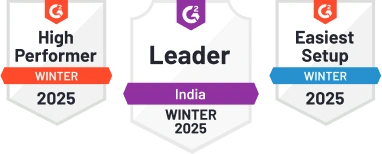Key Responsibility Areas (KRAs) & Key Performance Indicators (KPIs) for IT User Support Specialist
1. User Support & Issue Resolution
KRA: Providing timely user support and resolving technical issues to ensure seamless operations.
Short Description: Ensuring user satisfaction through efficient issue resolution.
- Percentage of support tickets resolved within SLA
- Average response time to user queries
- User satisfaction scores on issue resolution
- Number of repeat issues from the same user
2. Software & Hardware Troubleshooting
KRA: Diagnosing and fixing software and hardware problems to maintain system functionality.
Short Description: Ensuring smooth operation of software and hardware.
- Percentage of successful troubleshooting tasks
- Mean time to repair for hardware issues
- Software uptime percentage
- Reduction in recurring hardware failures
3. User Training & Documentation
KRA: Providing user training and creating documentation for efficient system usage.
Short Description: Empowering users through training and guides.
- Number of training sessions conducted
- User feedback on training effectiveness
- Completion rate of training modules
- Quality and relevance of documentation
4. System Security & Compliance
KRA: Ensuring system security measures are in place and compliance with data protection regulations.
Short Description: Safeguarding data and ensuring legal compliance.
- Number of security breaches detected and resolved
- Compliance audit results
- Training completion on data security for users
- Percentage of systems with updated security patches
5. Incident Management & Reporting
KRA: Managing and reporting incidents to prevent future occurrences and improve system reliability.
Short Description: Enhancing system reliability through incident analysis.
- Incident response time adherence
- Root cause analysis completion rate
- Trend analysis on incident types
- Improvement in incident recurrence rate
6. Performance Monitoring & Optimization
KRA: Monitoring system performance and optimizing resources for enhanced efficiency.
Short Description: Improving system performance through monitoring.
- System uptime percentage
- Resource utilization efficiency metrics
- Performance improvement initiatives implemented
- Feedback on system responsiveness from users
7. Vendor Management & Service Level Agreements
KRA: Managing vendor relationships and ensuring adherence to service level agreements for outsourced services.
Short Description: Optimizing vendor partnerships for service delivery.
- Vendor SLA compliance rate
- Vendor performance evaluations
- Cost savings achieved through vendor negotiations
- Resolution time for vendor-related issues
8. Continuous Learning & Skill Development
KRA: Engaging in continuous learning and skill development to stay updated with technological advancements.
Short Description: Enhancing expertise through continuous learning.
- Number of certifications obtained
- Participation in relevant training programs
- Feedback on skill utilization in daily tasks
- Skills gap analysis results
9. Team Collaboration & Knowledge Sharing
KRA: Collaborating with team members and sharing knowledge to foster a culture of continuous improvement.
Short Description: Promoting teamwork and knowledge exchange.
- Participation in team projects and initiatives
- Knowledge sharing sessions conducted
- Feedback on teamwork effectiveness
- Number of cross-functional collaborations
10. Stakeholder Communication & Relationship Management
KRA: Communicating effectively with stakeholders and managing relationships to align IT support with business objectives.
Short Description: Enhancing stakeholder engagement and satisfaction.
- Stakeholder feedback on IT support services
- Alignment of IT initiatives with business goals
- Response time to stakeholder inquiries
- Improvement in stakeholder satisfaction scores
Real-Time Example of KRA & KPI
[Insert a real-world example related to the IT User Support Specialist]
KRA: Provide an example of how an organization or professional applies this KRA in real life.
- KPI 1: [Example of a measurable KPI]
- KPI 2: [Example of a measurable KPI]
- KPI 3: [Example of a measurable KPI]
- KPI 4: [Example of a measurable KPI]
Describe how these KPIs led to improved performance and success.
Key Takeaways
- KRA defines what needs to be done, whereas KPI measures how well it is done.
- KPIs should always be SMART (Specific, Measurable, Achievable, Relevant, Time-bound).
- Regular tracking and adjustments ensure success in IT User Support Specialist.
Generate content in this structured format with clear, concise, and measurable KPIs while maintaining professional readability.







